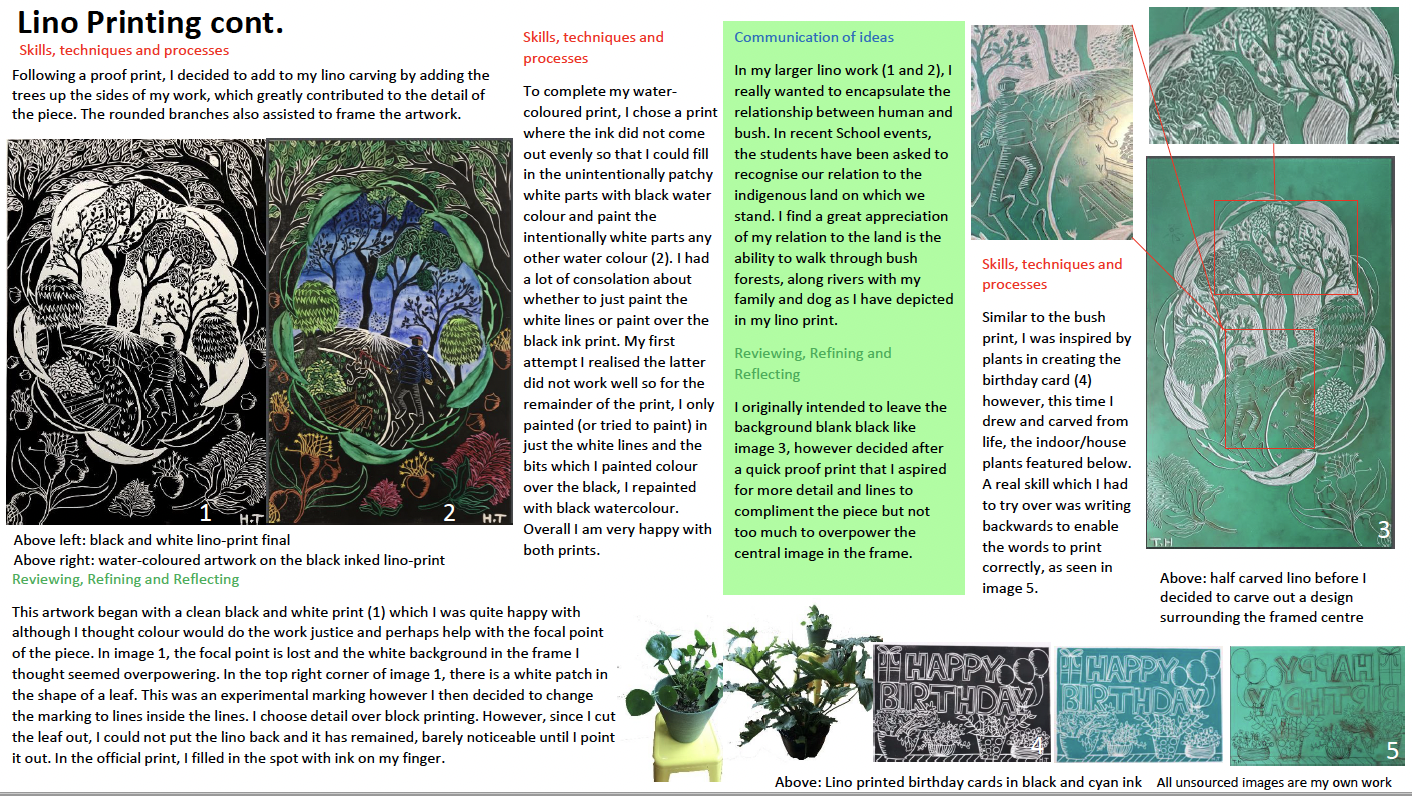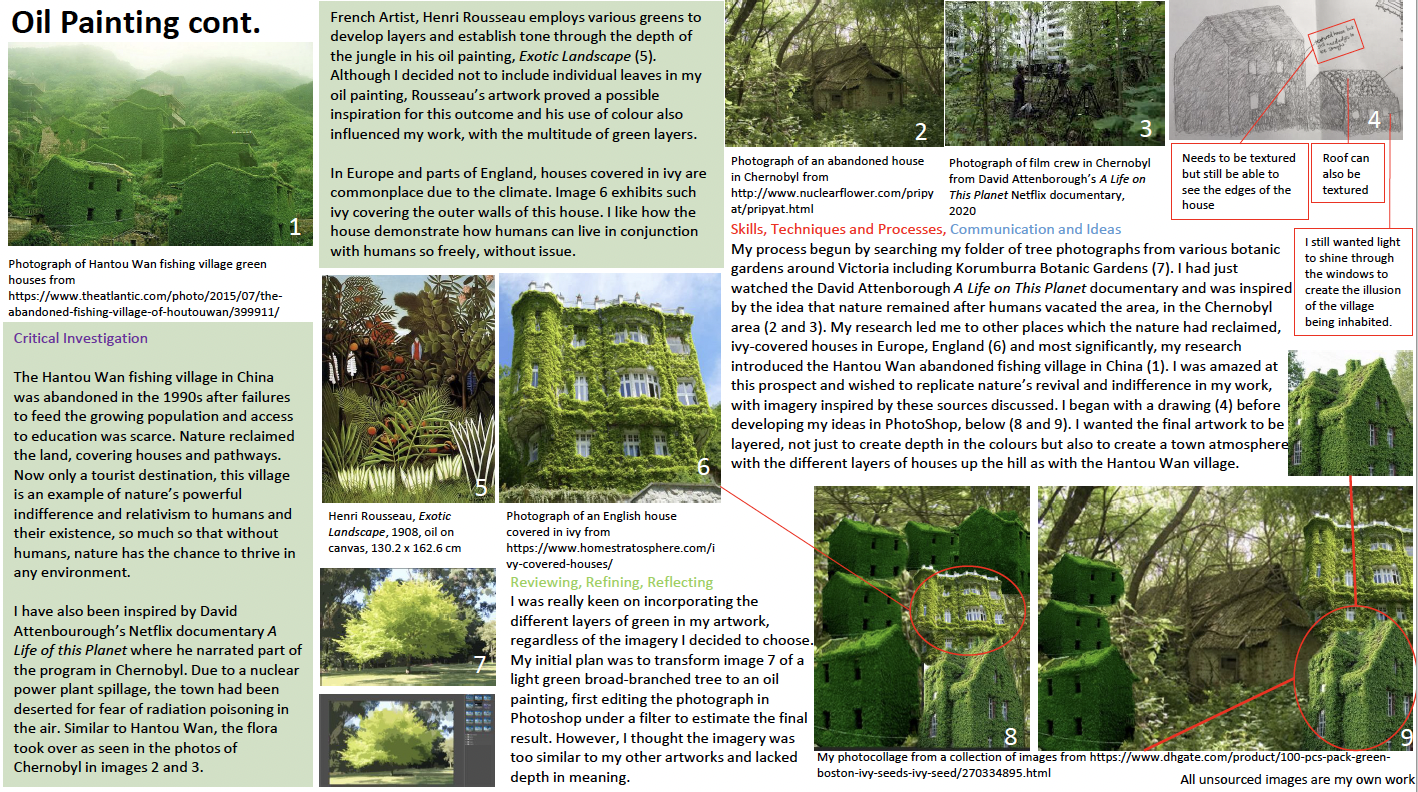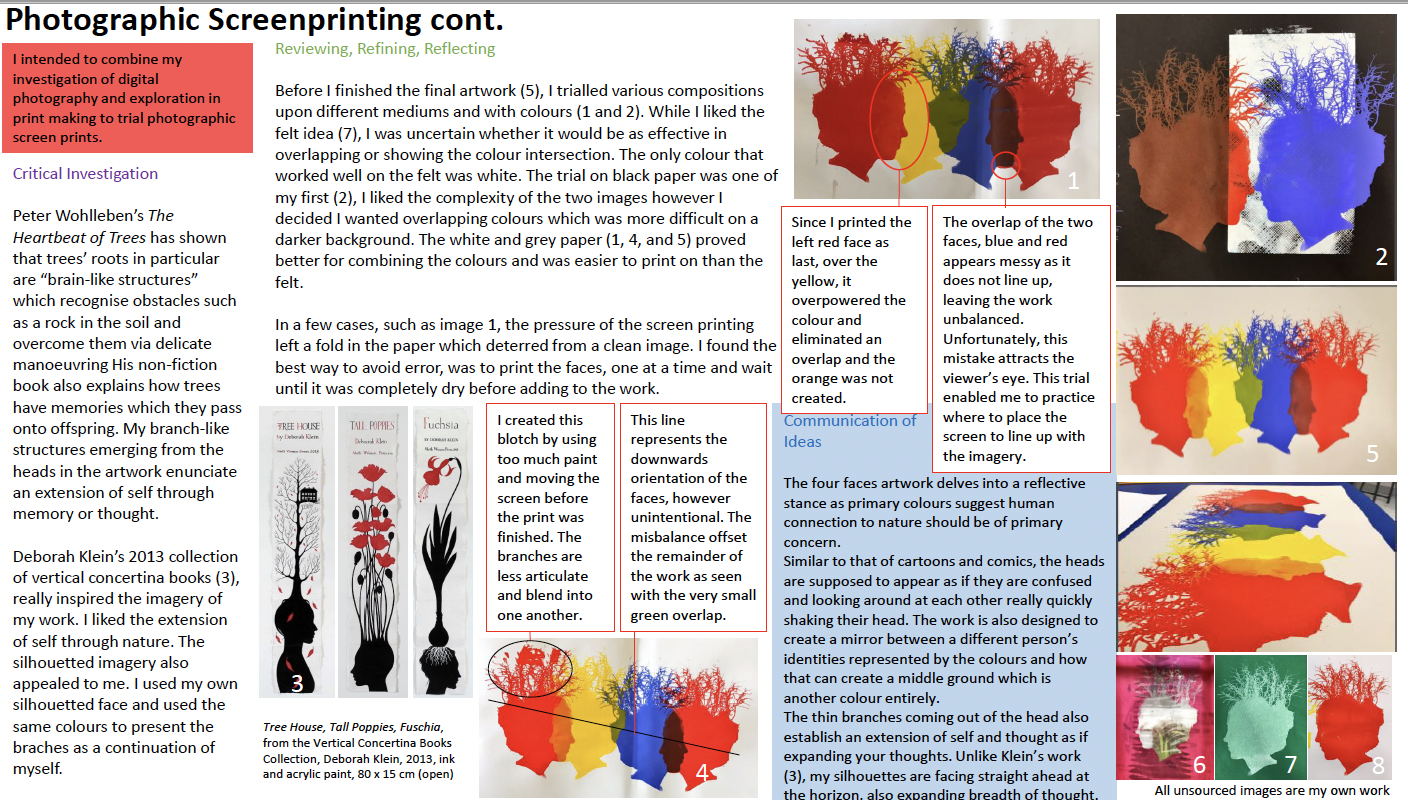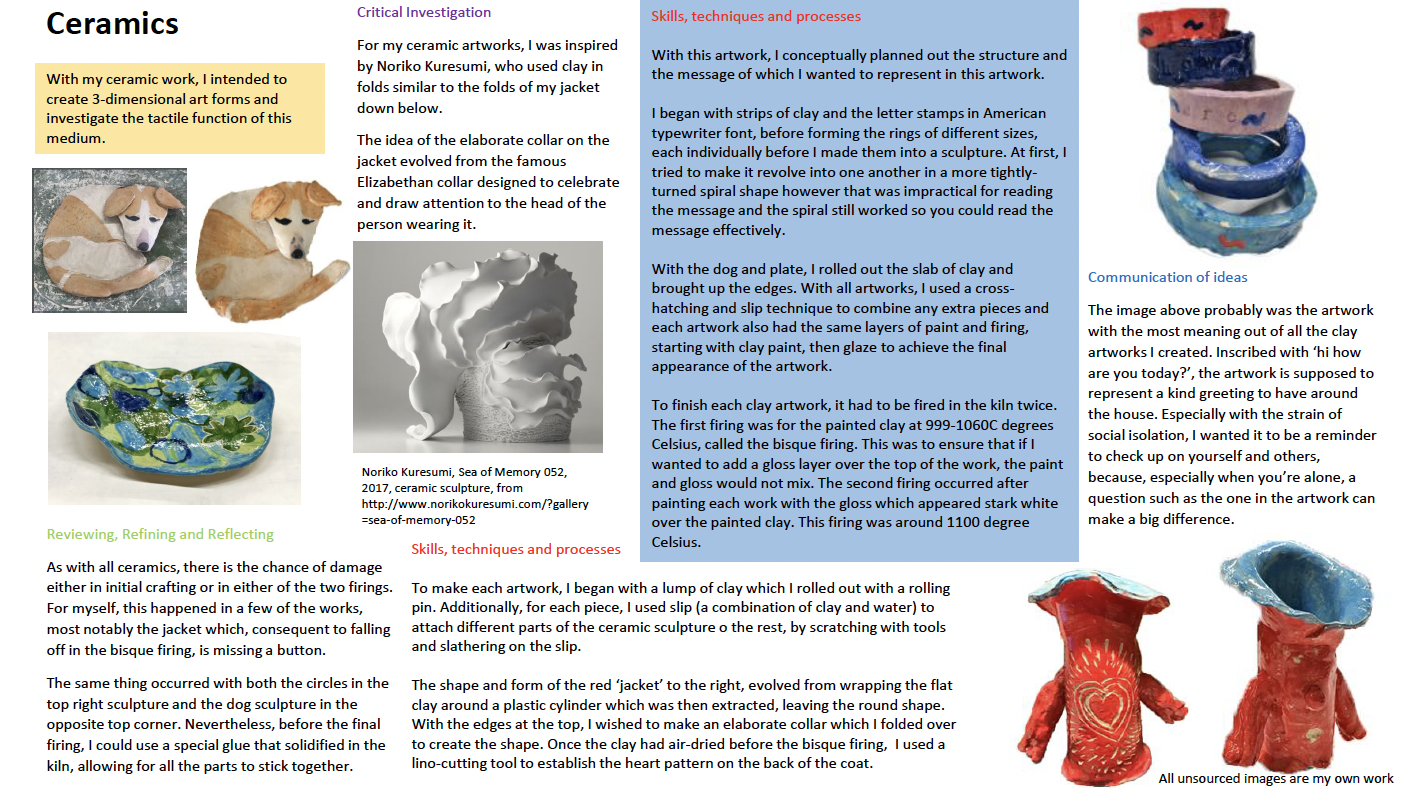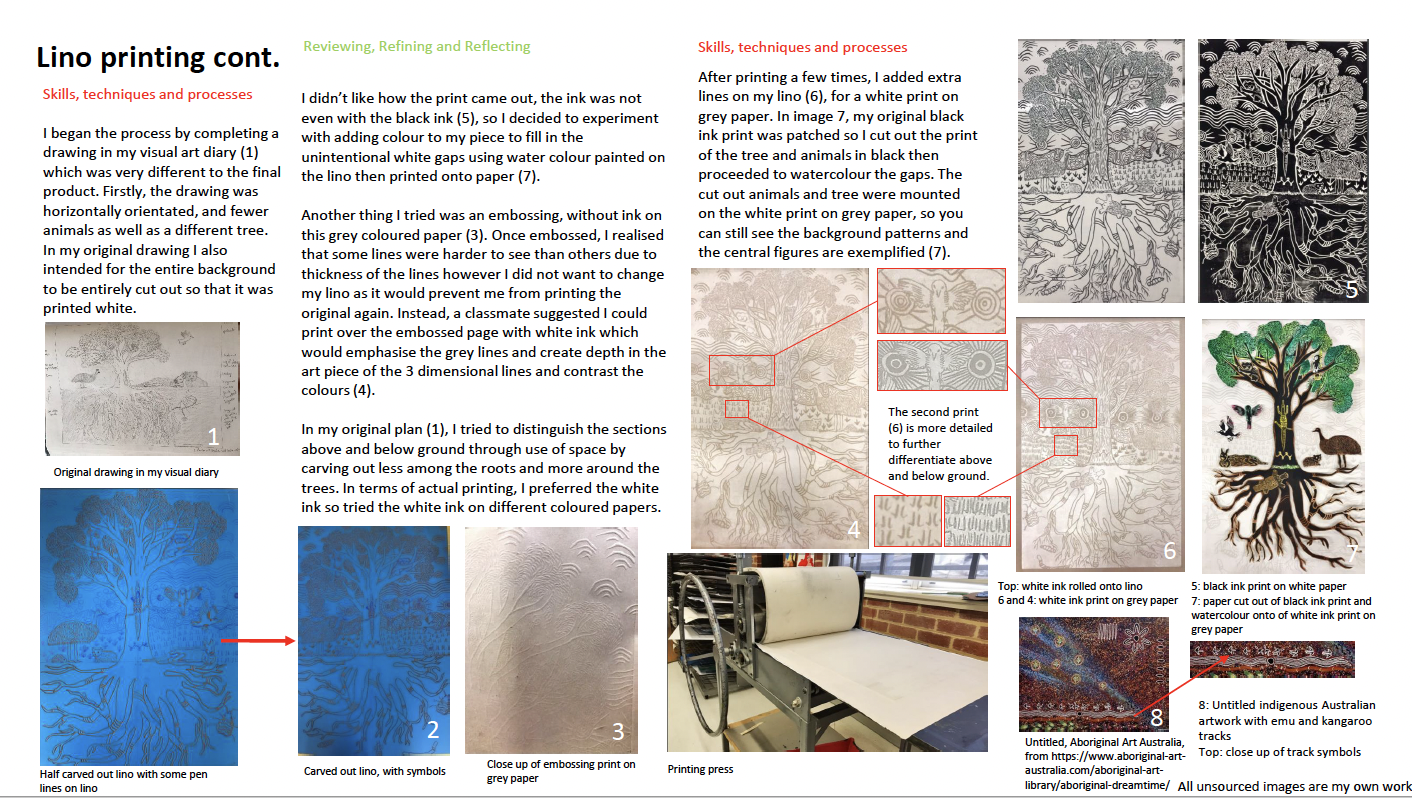IB Visual Arts
Harriet Thorpe
Since being surrounded by like-minded and passionate environmentalists while attending a school climate strike and rally, I have considered the human connection to the environment and its many facets, past, present and future. The most significant concept of my exhibition is interconnectedness, particularly within the natural world, a connection between humans and nature, animals and their environment. From my own experience of finding solace in bushland, I aim to encompass the grandeur or majesty of forests to entice a sense of reflection in the audience and to encourage consideration for the world surrounding them. Frequently tied into consumerist ideals of modern society, we forget we are standing on a living, breathing organism, which strives to keep us alive. The impact I hope to create from viewing my exhibition is an overwhelmingly positive sensory experience. The viewer follows the progression of ideas beginning with standing in the centre of a forest. I aim for the viewer to leave with a greater understanding and appreciation of their own environment and relish the human connection to nature. I explore the symbolism of both Australian native and non-native animals and how the connection between themselves and their environment, plus how we perceive them, differs. I have depicted humans' positive and negative connection to nature by alluding to the possibility of regrowth and reparation through the environment and nature’s defiant indifference following disasters. These negative connotations regard the human desire to control nature; however, I establish the futility in their endeavours by utilising strong natural imagery. I also use a self-portrait to depict my own interconnectedness with nature.
I explore the issue of oblivious human consumerism, at the expense of the natural world, through imagery and subject matter that questions an indifferent world without humans but also one in which cooperation with the land could prosper. Nature overcoming mistreatment poses an optimistic environmental future, however following the timeline, this only happens if a significant environmental change occurs; nature will follow suit, if given a chance, once again to thrive. The reoccurring motif of the tree is symbolic of self, forests signify our collective selves, and with roots and branches, an intrinsic connection to our environment. My work hopes to prompt reflection in the viewer, in their impact on their environment and those surrounding them, exhibiting how past mistakes, while grave, can be redeemed with climate action to once again fulfil a native landscape of sublime existence. I also hope to exhibit the fluidity of natural imagery to create a peaceful yet thought-provoking and positive experience for the viewer.
Although my artworks are predominantly photography-based, I have extended my photography with digital manipulation to create digital photo collages and photographic screenprints. My exhibition follows a timeline from past, present and future regarding human connection to nature. The artwork aims to take the viewer on a reflective journey from left to right of the exhibition space. Starting with the lino printed eucalyptus tree and embroidery-embellished bonfire screen print, representative of the past, the viewer continues as the mosaic embedded in resin introduces the early human theory of superiority to the natural world by trying to control it. The Rorschach style painting diptych depicts threatening scenes of climate impairment through fire. The four face portraits aim to be reflective and remind us that the time for action is now. The primary colours suggest nature and our co-prosperity should be of primary concern. The charred black felt tree with the screen printed bonfire imagery is the focal point of the exhibition. The scale of this artwork attracts the eye, and the leading lines of the branches stretch outwards to the individual artworks, portraying the idea of a timeline linking the artworks. At the tree’s base are two screenprinted maps, suggesting a personal solution for lost people. The digital photo collage depicting the 2021 Youth Climate Strike Protest portrays the current faces of resistance, though with underlying tones of impending danger if action is delayed further. The overgrown green grass houses and postcard photo collages predict a surrealist, albeit playful but optimistic future where humans, nature and animals can live in harmony and restore natural order in an ever-changing environment.
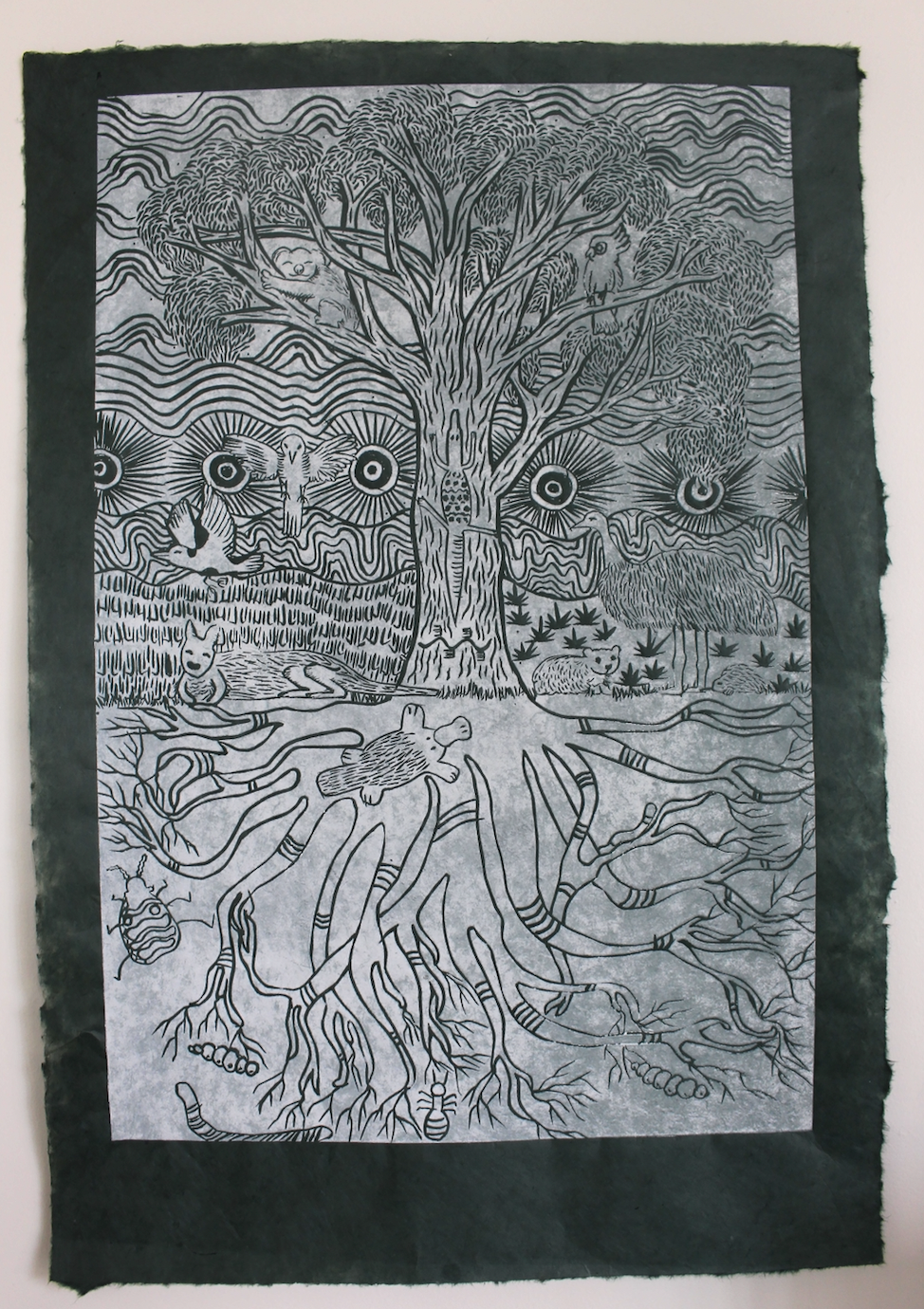








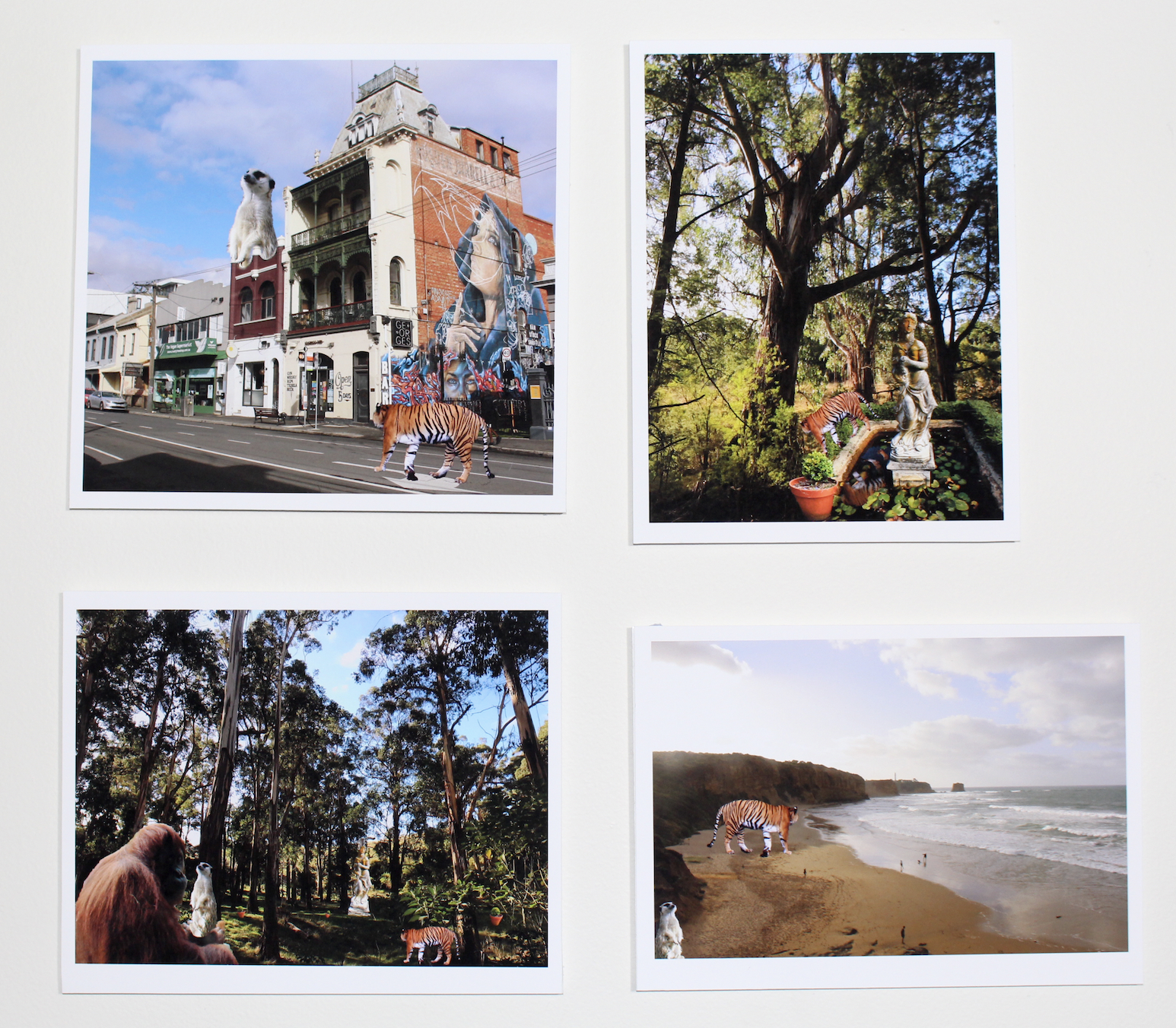
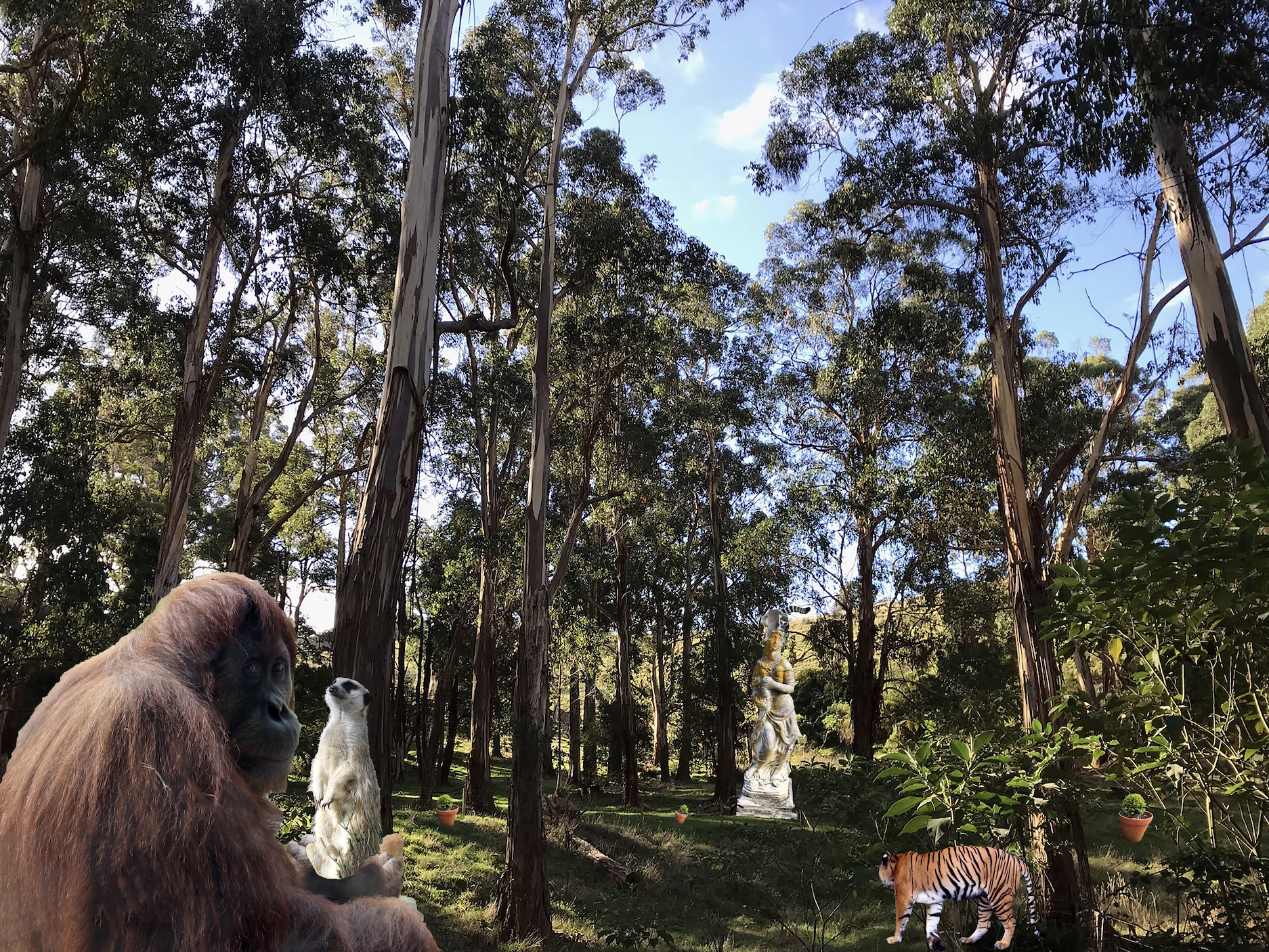


Harriet Thorpe
Meeting Place
Lino-print on mulberry leaf paper
Image size: 59 x 40 cm
My original print included symbols used by indigenous Australian’s artists to depict the strong interconnectedness they have had with the native flora and fauna of their country for over 65,000 years. However due to potential cultural misappropriation, I modified these symbols to depict the textures of the natural environment. This also suggests the history of an erased past. The roots emphasise the traditions and the dependence the eucalypt tree has had as a meeting place.
Control
Mosaic tiles on wood with resin and leaves
26 x 26 x 3 cm
The mosaic aims to include the viewer by reflecting themselves through the mirrored tiles. The viewer sees themselves in nature and is encouraged to reflect on their position as an influence on their environment since the beginning of human intelligence. The patterns and mathematical use of square tiles presents how humans try to control wilderness by attempting to cut and curate nature. The added leaves and resin illustrate nature’s intense indifference.
Wynorrific (Dangerously Attractive)
Acrylic painting on wood - diptych
Overall size: 25 x 50 cm
Inspired by the Rorsarch style paintings of Ben Quilty and 2019-2020 Australian Summer bushfires, my diptych depicts two mirrored fires to represent two ideas. The first, a symbol of intelligent human civilisation, evoking a sense of pride in achievement. However, it can also show human negligence for abusing this power and increasing global warming since the Industrial revolution, developing the Anthropocene existence where humans have totalitarian control, the precariously attractive fire indicating danger.
Fire Circle
Photographic screen print on paper with cotton embroidery
58 x 50 cm
The bonfires symbolise a meeting place celebrated by indigenous cultures where groups of people sat around a campfire and discussed solutions to a problem. In creating this artwork, I intended to explore ideas around the traditions of communication within friends and family in indigenous and other communities to solve problems. Each person was always granted an opinion, symbolised by the stitch designs as their contribution to the larger discussion.
Primary Concern
Photographic screen print on paper
38 x 56 cm
Initially inspired by Deborah Klein in methodology and design, the abstract self-portrait, alludes to the connection between humans and nature through the extension of self with the twigs. The four faces artwork delves into a reflective stance as primary colours suggest that nature and co-prosperity should be the primary concern. The overlapping that creates secondary colours also suggests interconnectedness and adds a personal connection to the exhibition.
Burnt
Photographic screen print on cut out felt
Overall size: 240 x 200cm
The black felt tree and ghost birds central to the exhibition address the stark reality of the charred limbs of a tree, victim to the 2019-20 Black Summer bushfires in Australia. The tree also warns of a devastating future if climate inaction continues, a threat to widespread flora and fauna. The printed bonfire imagery, creating texture on the tree is set and ready to burn and is designed as a call to action and turning point where humans can either light the fire and see the consequences or take action.
Way Through
Photographic screen print on paper (series of 2), cotton embroidery
Each map: 70 x 78 cm
The two paper maps explore cartography traditions and its reason for existence in using a map to find oneself or centre oneself in the universe. The trees are intended to astound and confuse the viewer and remind them of walking through unknown forests, however, the maps also suggest a way through, the stitching dictating a way to go. On each work, the different coloured thread is uneven and indicates there are many paths to a destination, even if you have to spin in circles before you find it.
Anthropocene – (or Smells Like Greenhouse Gases)
Digital photocollage
60 x 42 cm
The photocollage intends to demonstrate the passion of climate activists seen in Melbourne during the 2021 Climate Strike and the overwhelming voice of people, wanting to incite and ignite change in combatting the climate crisis. Since c. 1950, ‘Anthropocene’ has overwhelmed the Earth, where humans have complete control over the planet. Our past actions have contributed to Earths slow demise; however, Anthropocene also means humans have the power to revert the world to its former stability.
Greenhouses
Oil painting on canvasboard
41 x 51 cm
This painting shows a futuristic interpretation of co-symbiosis amongst humans and nature, where mossy green grass covers our houses. Inspired by imagery of the houses of the Hantou Wan abandoned fishing village and Chernobyl buildings, I was amazed at the prospect of regrowth following human disappearance, providing a sign of hope for a co-symbiotic future with humans and wildlife. The green also aims to evoke calm over the viewer (juxtaposed to the prior artworks) suggesting positive change.
Co-symbiosis (or L’entraide)
Digital photocollage (series of 4)
Overall size: 42 x 43 cm
Inspired by collaborative collage artists, Gracia and Louise, this artwork examines a settler’s assimilation of foreign and native cultures within the Australian environment. Upon reflection, I found it unnatural for tigers to be amongst the eucalypts at the Melbourne Zoo. The raw beauty of the Australian landscape is contrasted with pruned hedges and non-native animals through the cut and pasted surrealist composition, which intends for the statue and pot plants to feel intrusive and unwelcome.
Process portfolio






